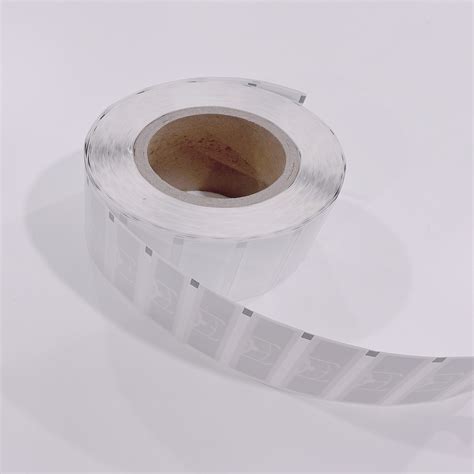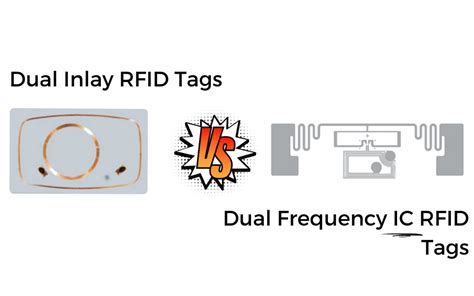dual rfid tag Dual frequency RFID labels combine the advantages of two RFID technologies, ultra high frequency (UHF) and high frequency (NFC), and can read and transmit data in different frequency bands.
I want to attempt to clone my college student ID. I bought an NFC .
0 · high frequency rfid tags
1 · dual frequency tags explained
2 · dual frequency rfid tags
3 · dual frequency rfid
This can also be purchased on the above shopping platform. Open the Mtools application. Plug in the ACR122u in your android smartphone with .
Dual-frequency RFID tags combine the benefits of two different frequency ranges. For example, a tag could use HF for access control purposes and UHF for inventory management purposes. .Dual-frequency RFID tags combine the benefits of two different frequency ranges. For example, a tag could use HF for access control purposes and UHF for inventory management purposes. This allows for more efficient and accurate tracking and management of assets and inventory.
suprema rfid card reader
The difference between a Dual Frequency IC and a Dual Inlay RFID tag is that, in a Dual Frequency IC, there are two antennas, connected to one single IC. Below is an example of a popular dual frequency IC’s. A dual-frequency RFID tag is capable enough to operate seamlessly across two different frequency bands, typically NFC and RAIN RFID, as it combines the strengths of identification and tracking. RFID dual-frequency tags, help industries and offer a powerful solution for various use cases.Dual-Frequency RFID tags are commonly employed in industries that need to track assets and inventory across different facilities. In logistics, these tags allow for the efficient tracking of goods as they move between regions that may use different RFID standards.
Dual frequency RFID labels combine the advantages of two RFID technologies, ultra high frequency (UHF) and high frequency (NFC), and can read and transmit data in different frequency bands.
smart 5535 rfid tag
With these new dual-frequency RFID products, brands and retailers can now allow shoppers to purchase products anytime, anywhere, and interact with them throughout the entire product lifecycle - without compromising data privacy. Track, trace and engage – .Dual-Frequency RFID tags are advanced identification tools that operate on two distinct frequencies, allowing for versatile data transmission across different environments. These tags enable seamless communication with a wide range of .RFID dual-band combo cards combine both high-frequency (HF) and ultra-high frequency (UHF) technologies in a single card, providing a versatile and efficient access control solution.The Beontag Carrier Dual Frequency UHF RFID/NFC Label offers shared RAIN RFID and NFC memory for logistics and consumer interaction. With this unique label, users can access the same unique information about a product or asset via either a standard RAIN RFID or with an NFC reader or mobile phone.
stealing card info with rfid
A dual-frequency RFID tag design supports both popular RFID frequency ranges, the UHF (860-960 MHz) and the HF (13.56 MHz) allowing a smartphone user to read an RFID tag.
Dual-frequency RFID tags combine the benefits of two different frequency ranges. For example, a tag could use HF for access control purposes and UHF for inventory management purposes. This allows for more efficient and accurate tracking and management of assets and inventory. The difference between a Dual Frequency IC and a Dual Inlay RFID tag is that, in a Dual Frequency IC, there are two antennas, connected to one single IC. Below is an example of a popular dual frequency IC’s. A dual-frequency RFID tag is capable enough to operate seamlessly across two different frequency bands, typically NFC and RAIN RFID, as it combines the strengths of identification and tracking. RFID dual-frequency tags, help industries and offer a powerful solution for various use cases.Dual-Frequency RFID tags are commonly employed in industries that need to track assets and inventory across different facilities. In logistics, these tags allow for the efficient tracking of goods as they move between regions that may use different RFID standards.
Dual frequency RFID labels combine the advantages of two RFID technologies, ultra high frequency (UHF) and high frequency (NFC), and can read and transmit data in different frequency bands.
With these new dual-frequency RFID products, brands and retailers can now allow shoppers to purchase products anytime, anywhere, and interact with them throughout the entire product lifecycle - without compromising data privacy. Track, trace and engage – .

Dual-Frequency RFID tags are advanced identification tools that operate on two distinct frequencies, allowing for versatile data transmission across different environments. These tags enable seamless communication with a wide range of .RFID dual-band combo cards combine both high-frequency (HF) and ultra-high frequency (UHF) technologies in a single card, providing a versatile and efficient access control solution.
high frequency rfid tags
dual frequency tags explained
The Beontag Carrier Dual Frequency UHF RFID/NFC Label offers shared RAIN RFID and NFC memory for logistics and consumer interaction. With this unique label, users can access the same unique information about a product or asset via either a standard RAIN RFID or with an NFC reader or mobile phone.
dual frequency rfid tags

stealth card rfid blocker card
success rate of rfid tags
NFC verification of over 14,000 types of eIDs from 250 countries and territories, including passports, driver’s licenses, and ID cards. A complete set of authenticity checks, including cross-verification of data from the VIZ, MRZ, .
dual rfid tag|dual frequency rfid